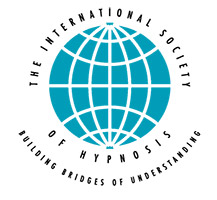
Paraphilia
Type of mental disorder characterized by a preference for obsession with unusual sexual practices, as pedophilia, sadomasochism, or exhibitionism. Abnormal sexual desires, typically involving extreme or dangerous activities.
A paraphilia is a condition in which a person's sexual arousal and gratification depend on fantasizing about and engaging in sexual behavior that is atypical and extreme. A paraphilia can revolve around a particular object (children, animals, underwear) or around a particular act (inflicting pain, exposing oneself). Most paraphilias are far more common in men than in women. The focus of a paraphilia is usually very specific and unchanging.
A paraphilia is distinguished by a preoccupation with the object or behavior to the point of being dependent on that object or behavior for sexual gratification.
Paraphilias include sexual behaviors that society may view as distasteful, unusual or abnormal. In descending order, the most common are pedophilia (sexual activity with a child usually 13 years old or younger), exhibitionism (exposure of genitals to strangers), voyeurism (observing private activities of unaware victims) and frotteurism (touching, rubbing against a nonconsenting person), while fetishism (use of inanimate objects), sexual masochism (being humiliated or forced to suffer), sexual sadism (inflicting humiliation or suffering) and transvestic fetishism (cross-dressing) are far less common.
Some of these behaviors are illegal and those who are under treatment for paraphilias have often encountered legal situations surrounding their behaviors. There is also a category called Paraphilia Not Otherwise Specified to cover paraphilias not falling into the already named diagnoses such as those involving dead people, urine, feces, enemas and obscene phone calls.
Symptoms
Although many paraphilias seem foreign or extreme, they are easier to understand if one thinks of those behaviors that, in less extreme versions, are quite common. For instance, having a partner "talk dirty" may be a "turn-on" for some people, but when talking dirty is the only way that sexual arousal or satisfaction can occur, it would be considered a paraphilia. Others want to be bitten, or spanked, or become aroused by watching their partner. Viewing a nude person or watching sexually explicit videos can be arousing for most people. Paraphilias are magnified to the point of psychological dependence.
Causes
It is unclear what causes a paraphilia to develop. Psychoanalysts theorize that an individual with a paraphilia is repeating or reverting to a sexual habit that arose early in life. Behaviorists suggest that paraphilias begin through a process of conditioning. Nonsexual objects can become sexually arousing if they are repeatedly associated with pleasurable sexual activity. Or, particular sexual acts such as peeping, exhibiting, bestiality that provide especially intense erotic pleasure can lead the person to prefer that behavior. In some cases there seems to be a predisposing factor such as difficulty forming person-to-person relationships.
Behavioral learning models suggest that a child who is the victim or observer of inappropriate sexual behaviors learns to imitate and is later reinforced for the behavior. Compensation models suggest that these individuals are deprived of normal social sexual contacts and thus seek gratification through less socially acceptable means. Physiological models focus on the relationship between hormones, behavior and the central nervous system with a particular interest in the role of aggression and male sexual hormones.
Treatments
Treatment approaches have included traditional psychoanalysis, hypnosis, and behavior therapy techniques. More recently, a class of drugs called antiandrogens that drastically lower testosterone levels temporarily have been used in conjunction with these forms of treatment. The drug lowers the sex drive in males and reduces the frequency of mental imagery of sexually arousing scenes. This allows concentration on counseling without as strong a distraction from the paraphiliac urges. Increasingly, the evidence suggests that combining drug therapy with cognitive behavior therapy can be effective.
Regarding medication for paraphilias, level of sex drive is not consistently related to the behavior of paraphiliacs and also high levels of circulating testosterone do not predispose a male to paraphilias. That said, hormones such as medroxyprogesterone acetate (Depo-Provera) and cyproterone acetate decrease the level of circulating testosterone thus reducing sex drive and aggression. These hormones result in reduction of frequency of erections, sexual fantasies and initiations of sexual behaviors including masturbation and intercourse. Hormones are typically used in tandem with behavioral and cognitive treatments. Antidepressants such as fluoxetine (Prozac) have also successfully decreased the sex drive but have not effectively targeted sexual fantasies.
Research suggests that cognitive-behavioral models are effective in treating paraphiliacs. Aversive conditioning, for example, involves using negative stimuli to reduce or eliminate a behavior. Covert sensitization entails the patient relaxing, visualizing scenes of deviant behavior followed by a negative event such as getting his penis stuck in the zipper of his pants. Assisted aversive conditioning is similar to covert sensitization except the negative event is made real most likely in the form of a foul odor pumped in the air by the therapist.
The goal is for the patient to associate the deviant behavior with the foul odor and take measures to avoid the odor by avoiding said behavior. Aversive behavioral reversal is commonly known as "shame therapy" as the goal is to shame the offender into stopping the deviant behavior.
For example, the offender might be made to watch videotapes of their crime with the goal that the experience will be distasteful and offensive to the offender. Vicarious sensitization entails showing videotapes of deviant behaviors and their consequences such as victims describing desired revenge or perhaps even watching surgical castrations.
There are also positive conditioning approaches that might center on social skills training and alternate behaviors the patient might take that are more appropriate. Reconditioning techniques center on providing immediate feedback to the patient so that the behavior will be changed right away. For example, a person might be connected to a plethysmographic biofeedback machine that is hooked to a light. The person is taught to keep the light within a specific range of color while the person is exposed to sexually stimulating material. Or masturbation training might focus on separating pleasure in masturbation and climax with the deviant behavior.
Cognitive therapies described include restructuring cognitive distortions and empathy training. Restructuring cognitive distortions involves correcting erroneous beliefs by the patient, which may lead to errors in behavior such as seeing a victim and constructing erroneous logic that the victim deserves to be party to the deviant act. Empathy training involves helping the offender take on the perspective of the victim and in identification with the victim, understand the harm that has been done.




































